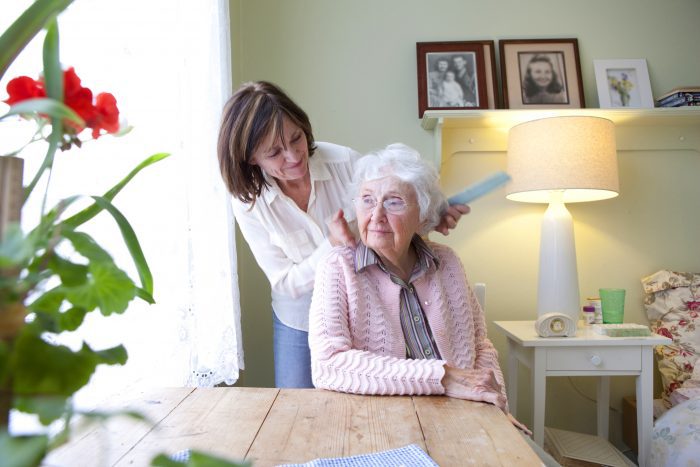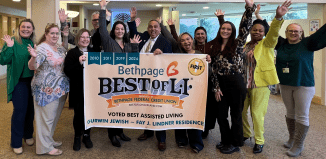Tips for visiting a loved one with memory loss
By Elissa Gargone

One of the great pleasures of life is spending time with a beloved family member or friend. But what happens to that quality time when that special person develops dementia? While its inescapable that a certain level of conversation will be lost, by reorienting your expectations it’s still possible for both of you to have a meaningful visit.
The first step is to adjust to your loved one’s experience and enter their world. Focus not on what they have lost, but what still remains — their personality, their sense of humor, appreciation of their surroundings, or a connection to music. Start your visit with a smile, eye contact and a simple touch — a pat on the shoulder or back, a squeeze of their hand. These simple gestures help bring focus and connection to the interaction. Bringing something tangible with you that can act as an icebreaker — books, toys, photos or a tasty treat — are often helpful.
Conversations may become less about ideas and storytelling and more about sharing feelings and emotions. If necessary, redirect challenging conversations in gentle, positive and creative ways, commenting on objects in the room, or outside the window.
Asking your companion for their advice or opinion can make them feel valued and competent. Intellect is often perfectly intact, even if memory is fading. And please remember, you don’t need to correct your loved one’s recollections or assumptions. Empathize and spare their feelings.
Jefferson’s Ferry’s memory support neighborhood has been designed to help residents and their loved ones enjoy a range of activities and opportunities for connection in a secure environment. While you may not have all of these options available to you, you can adapt some of these ideas to help you to connect with your special person.
The memory support neighborhood is set up to allow residents to safely meander through the hallways and visit “lifestyle stations.” These lifestyle stations replicate environments familiar to our residents that provide comfort and a sense of belonging. Examples of lifestyle stations include a workbench with tools, a desk with computer station and phone, a nursery with baby doll, a sports room with pennants and hats, or a simple kitchen set up for coffee and conversation.
Our common rooms and visiting spaces include plenty of color, art, and textiles on the walls to stimulate the senses. We also have secure outdoor garden spaces.
And then there’s music. Music is a pathway that can trigger a flood of long term memories and emotions. A body of evidence suggests that music prompts the secretion of dopamine, which spurs the brain to produce feelings of pleasure and satisfaction. Bringing a playlist of greatest hits enjoyed over a person’s lifetime along with a willingness to sing along or dance is a great way to enhance a visit. Playing familiar and well-loved music can also help to settle someone in an anxious or agitated state.
Despite a variety of tools and techniques, there are times when a visit doesn’t go smoothly for reasons beyond your control. Don’t judge yourself too harshly when this happens.
Few of us are prepared for the challenges that arise when trying to connect to a loved one with dementia. Unless you’re a professional, it’s not as if you’ve been to school to study this. The most you can do is accept the challenges that come with someone in need of memory support and do your best. There will be good times and the not so good times, but you may be surprised at how fulfilling your visits can be.
Elissa Gargone is the Vice President of Sales and Marketing at Jefferson’s Ferry Lifecare Retirement Community in South Setauket.
This article originally appeared in TBR News Media’s Prime Times senior supplement on 01/25/24.







